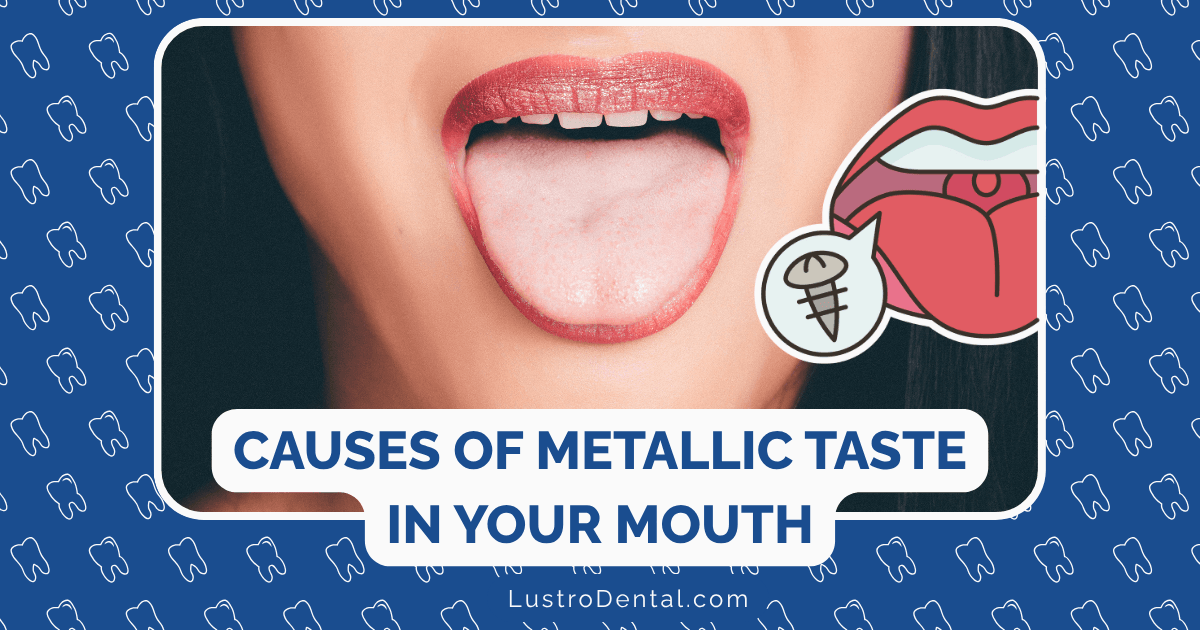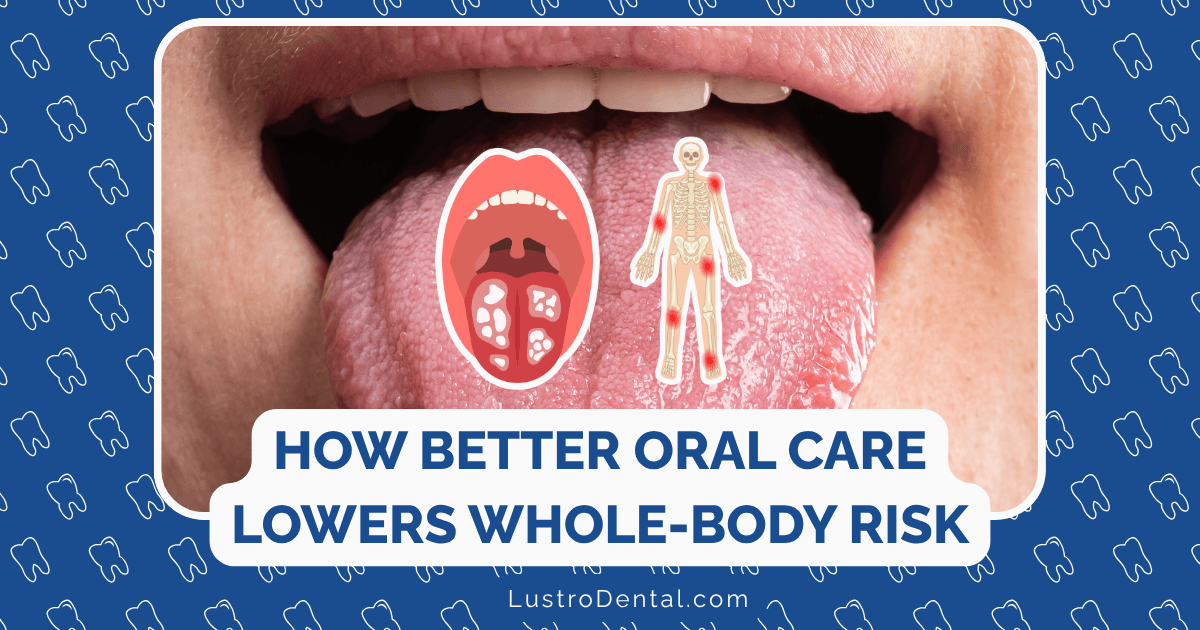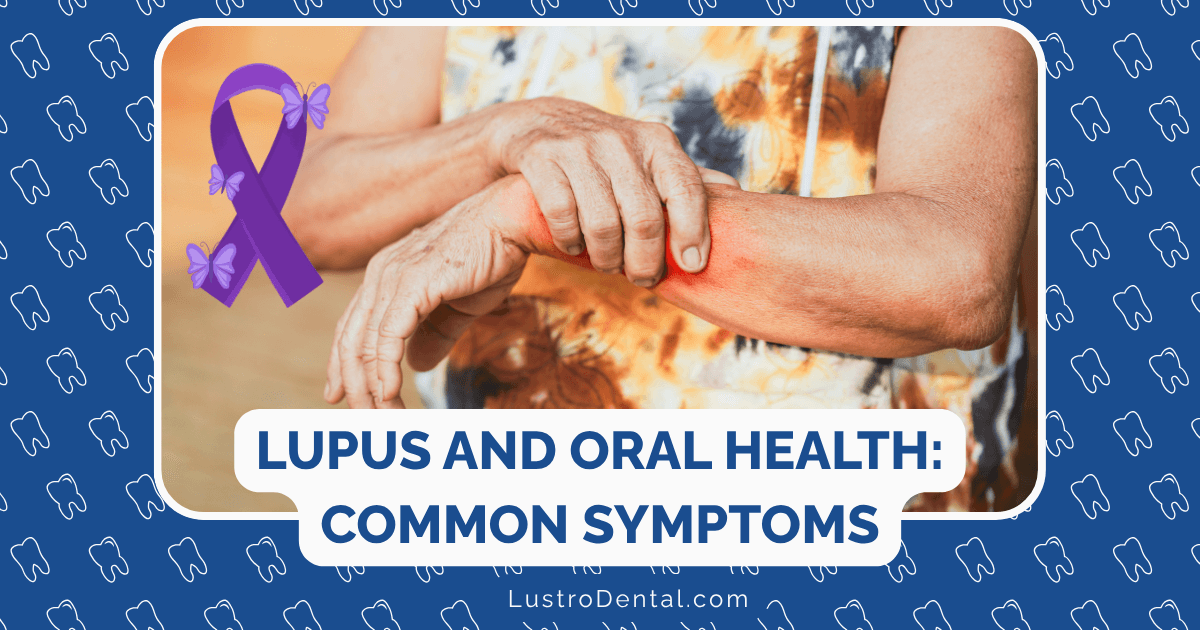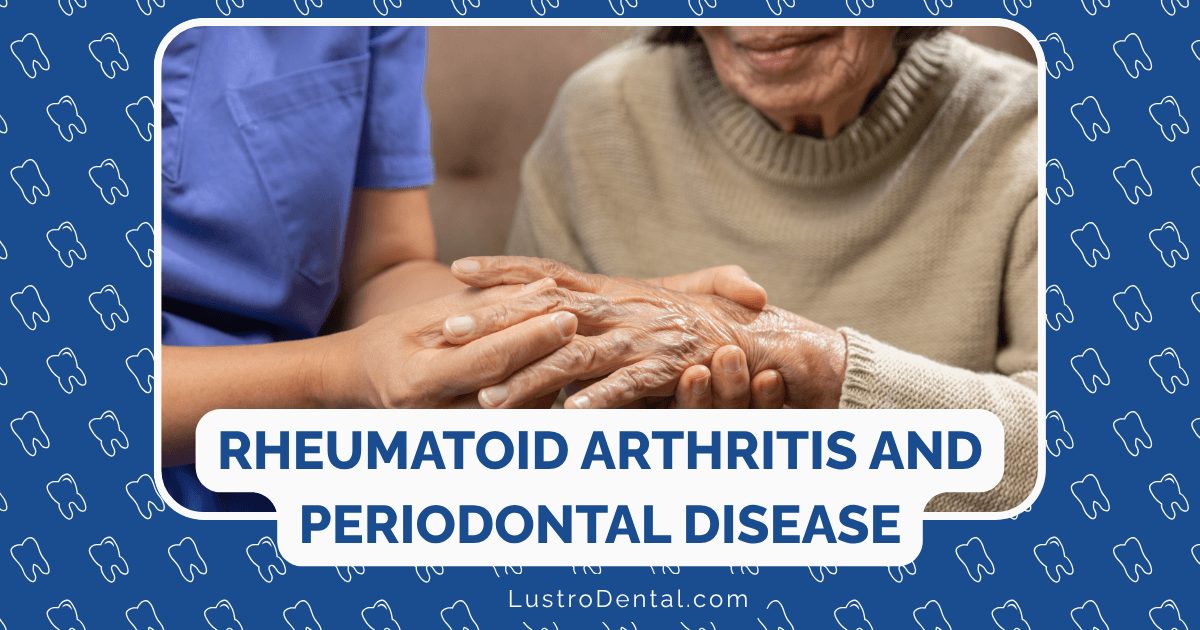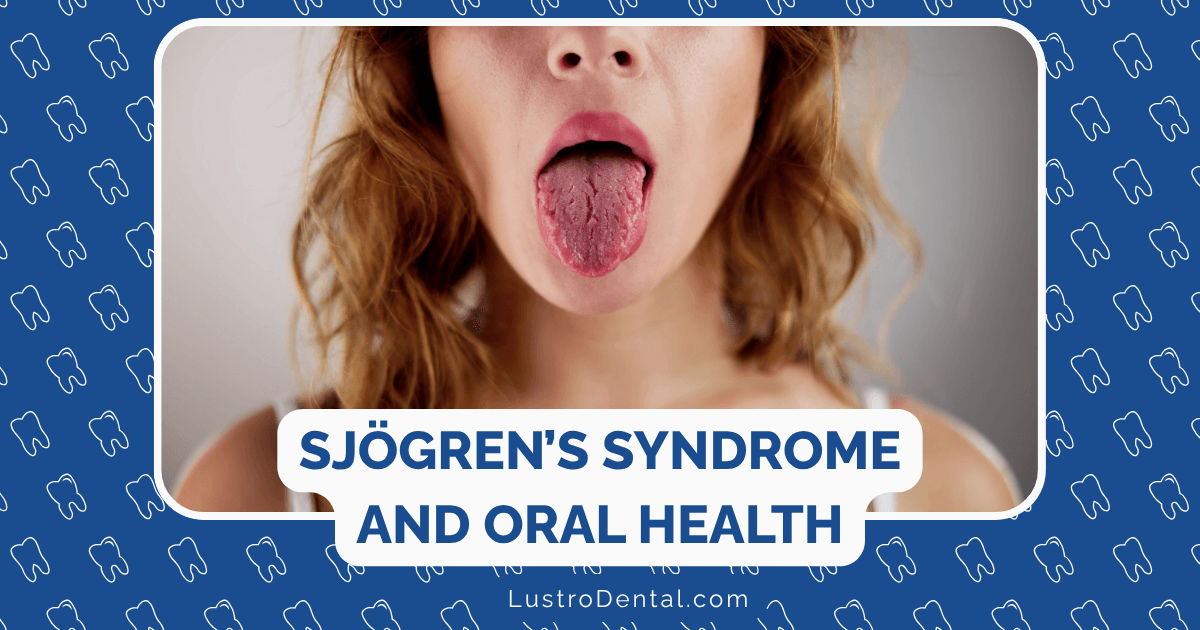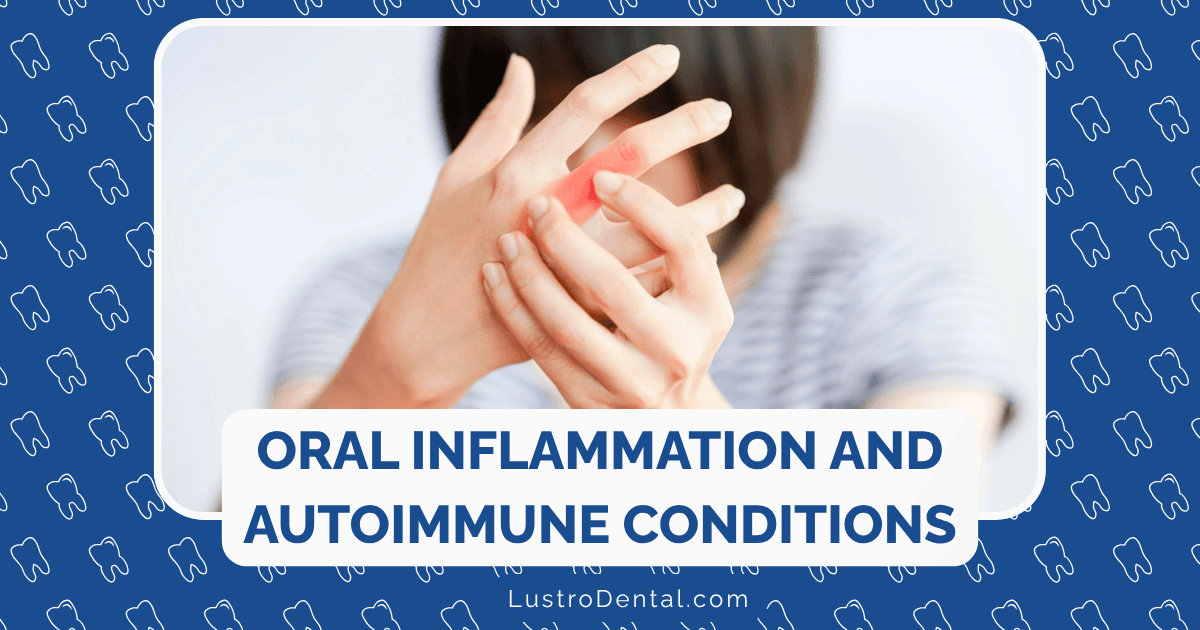Signs of Undiagnosed Diabetes Your Dentist Might Notice
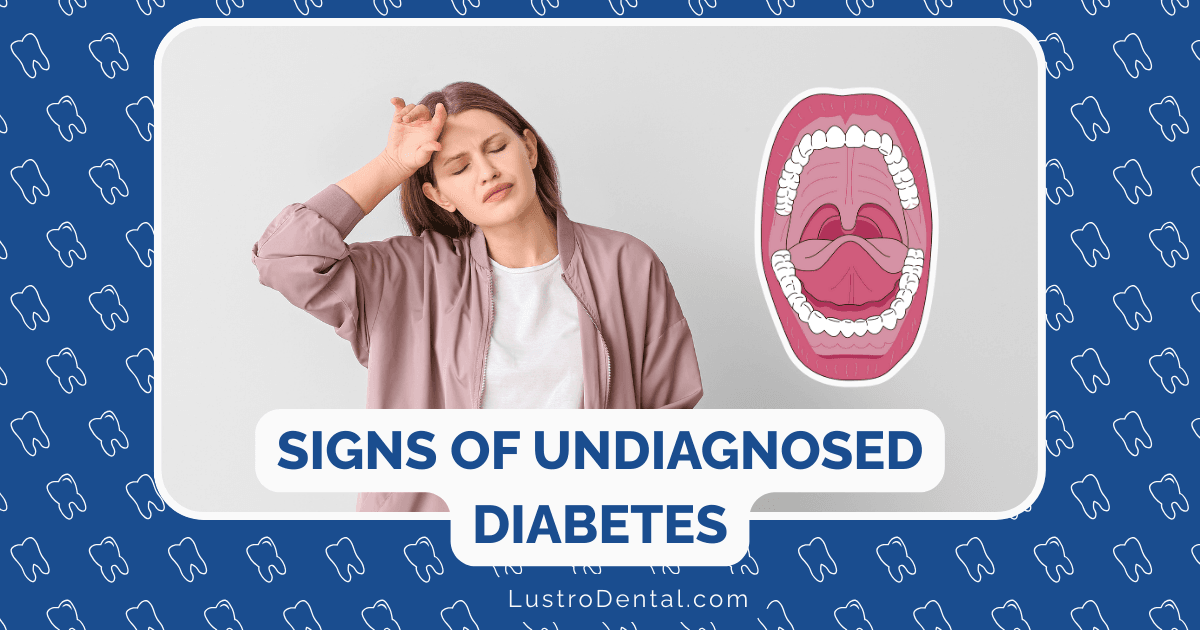
When you think about diabetes detection, you probably imagine blood tests at your doctor’s office. But what if your dentist could be the first healthcare professional to spot signs of this serious condition? With approximately one million people in the United States living with undiagnosed diabetes—representing over 21% of all diabetes cases—early detection is crucial for preventing complications.
Emerging research highlights the important role dentists can play in identifying undiagnosed diabetes. In fact, the 2025 Standards of Care in Diabetes now includes specific recommendations about dental care, emphasizing the bidirectional relationship between oral health and diabetes. Let’s explore the key signs of undiagnosed diabetes that your dentist might notice during a routine exam.
Why Dentists Are Well-Positioned to Spot Diabetes
“Dentists see patients more regularly than many other healthcare providers,” explains Dr. Sarah Johnson, endocrinologist at Mayo Clinic. “Many people visit their dentist twice yearly for check-ups, even when they’re not seeing a physician regularly.”
This frequent contact gives dentists a unique opportunity to notice changes in oral health that might indicate systemic issues like diabetes. Additionally, the mouth often shows early signs of diabetes before other symptoms become apparent.
A groundbreaking 2025 study from the University of Birmingham found that dental teams could effectively detect early signs of undiagnosed Type 2 diabetes during routine appointments. The INDICATE-2 study, which recruited 38 dental practices across England, discovered that nearly 15% of patients who perceived themselves as healthy actually exceeded the UK pre-diabetes/diabetes threshold when tested.
Key Oral Signs of Undiagnosed Diabetes
1. Persistent Gum Disease That Doesn’t Respond to Treatment
Gum disease (periodontal disease) is one of the most common and telling signs of undiagnosed diabetes.
“When we see patients with severe gum inflammation or recurrent periodontal disease despite good oral hygiene and appropriate treatment, it raises a red flag,” notes Dr. Michael Chen, periodontist at the University of California. “Diabetes reduces the body’s ability to fight infection and impairs healing, making gum disease both more severe and more resistant to treatment.”
Signs of diabetes-related gum disease include:
- Red, swollen gums that bleed easily
- Receding gums that pull away from teeth
- Persistent bad breath that doesn’t improve with brushing
- Pus between teeth and gums
- Loose teeth or increasing spaces between teeth
Research published in the Journal of Dental Research in 2025 found that people with undiagnosed diabetes are 2-3 times more likely to have severe periodontal disease compared to those without diabetes.
2. Dry Mouth (Xerostomia)
Excessive thirst and urination—classic symptoms of diabetes—can lead to chronic dry mouth, which dentists can easily detect.
“Patients with undiagnosed diabetes often complain that their mouth feels constantly dry, regardless of how much water they drink,” explains Dr. Elizabeth Wong, dental surgeon specializing in diabetes-related oral health. “This isn’t just uncomfortable—it creates an environment where cavity-causing bacteria can thrive.”
Signs of diabetes-related dry mouth include:
- Sticky, dry feeling in the mouth
- Thick, stringy saliva
- Cracked lips and corners of the mouth
- Frequent thirst
- Difficulty speaking or swallowing
- Increased cavity formation, especially along the gumline
A 2025 study published in the Journal of Clinical Dentistry found that approximately 65% of patients with undiagnosed diabetes reported symptoms of dry mouth, compared to just 24% of non-diabetic controls.
3. Delayed Healing After Dental Procedures
One of the most telling signs of undiagnosed diabetes is when oral tissues take unusually long to heal after procedures like extractions, deep cleanings, or gum surgery.
“When a patient’s extraction site is still not healing properly after 7-10 days, we need to consider underlying causes,” says Dr. Robert Thompson, oral surgeon at New York University. “High blood glucose impairs blood flow to tissues and disrupts the normal healing process.”
Signs of diabetes-related healing problems include:
- Extraction sites that remain open longer than expected
- Persistent pain following procedures
- Increased post-operative infections
- Tissue that appears pale rather than healthy pink
- Slow resolution of oral ulcers or sores
4. Frequent or Recurring Oral Infections
Undiagnosed diabetes weakens the immune system, making patients more susceptible to various oral infections.
“We see a higher incidence of oral thrush—a fungal infection—in patients with uncontrolled or undiagnosed diabetes,” notes Dr. Wong. “The combination of high glucose levels in saliva and reduced immune function creates the perfect environment for fungal overgrowth.”
Signs of diabetes-related infections include:
- White or yellow patches on the tongue, cheeks, or roof of the mouth (thrush)
- Recurring abscesses in the mouth
- Multiple periodontal abscesses
- Frequent oral infections despite good hygiene
A 2025 study in the Journal of Oral Microbiology found that patients with undiagnosed diabetes had significantly higher levels of Candida species in their saliva compared to non-diabetic controls.
5. Burning Mouth Syndrome
Some patients with undiagnosed diabetes experience a burning sensation in their mouth, particularly on the tongue.
“Burning mouth syndrome can have many causes, but when it occurs alongside other risk factors for diabetes, it warrants further investigation,” explains Dr. Chen. “The burning sensation is thought to be related to neuropathy—nerve damage that’s common in diabetes.”
Signs of diabetes-related burning mouth syndrome include:
- Burning sensation that typically affects the tongue but may also involve the lips, gums, palate, throat, or entire mouth
- Taste changes, such as a bitter or metallic taste
- Dry mouth that accompanies the burning sensation
- Symptoms that tend to get worse throughout the day
6. Parotid Gland Enlargement
Enlargement of the parotid glands—the largest salivary glands located in front of the ears—can be a visible sign of undiagnosed diabetes.
“Bilateral parotid enlargement without an obvious cause like an infection should prompt consideration of metabolic disorders, including diabetes,” says Dr. Thompson. “This enlargement is often painless but noticeable when examining the face.”
7. Increased Cavity Formation Despite Good Oral Hygiene
Patients with undiagnosed diabetes may develop cavities at an unusually high rate, even when they maintain good oral hygiene habits.
“When we see multiple new cavities in a patient who brushes, flosses, and has regular cleanings, it raises concerns,” notes Dr. Wong. “The combination of dry mouth and elevated glucose levels in saliva creates an ideal environment for cavity-causing bacteria.”
Signs include:
- Multiple new cavities between dental visits
- Cavities in unusual locations, such as the roots of teeth
- Rapid progression of tooth decay
How Dentists Are Screening for Diabetes
Recognizing the important role they can play in diabetes detection, many dental practices are implementing formal screening protocols:
Risk Assessment Questionnaires
The first step often involves a simple questionnaire to assess diabetes risk factors, such as:
- Family history of diabetes
- Age over 45
- Being overweight or obese
- Physical inactivity
- History of gestational diabetes or giving birth to a baby over 9 pounds
- High blood pressure or high cholesterol
The Diabetes Risk Assessment in Dentistry Score (DDS), developed specifically for dental settings, is being increasingly adopted in practices across the country.
Chairside HbA1c Testing
Some dental practices now offer non-invasive or minimally invasive screening tests right in the dental chair.
“We’re seeing a growing trend of in-office HbA1c testing, which provides a measure of average blood glucose over the past 2-3 months,” explains Dr. Johnson. “This simple finger-prick test can be performed during a dental visit and provides immediate results.”
A 2025 initiative by Delta Dental of Arizona and PDS Health is implementing HbA1c testing in dental practices to identify patients at risk for diabetes or with poorly controlled diabetes. The 12-month study will include approximately 1,500 adult patients across seven dental practices.
Referral Pathways
Dentists who suspect undiagnosed diabetes typically have established referral relationships with primary care physicians.
“The key is having a clear pathway for patients to follow up with their physician,” notes Dr. Chen. “Simply telling a patient ‘you might have diabetes’ isn’t enough—we need structured referral systems.”
The iDENTify study found that while dental professionals could effectively identify patients at risk for diabetes, only 25% of referred patients had their results returned to the dental practice, highlighting the need for better communication between dental and medical providers.
What Happens If Your Dentist Suspects Diabetes?
If your dentist notices signs that might indicate undiagnosed diabetes, here’s what you can expect:
- Open discussion: Your dentist will share their observations and concerns with you.
- Risk assessment: You may be asked to complete a diabetes risk questionnaire.
- Possible in-office screening: Some practices offer chairside HbA1c testing.
- Medical referral: Your dentist will likely recommend you see your primary care physician for proper testing and diagnosis.
- Follow-up: Your dentist may ask you to report back after seeing your physician to help coordinate your dental care accordingly.
“The goal isn’t for dentists to diagnose diabetes,” clarifies Dr. Wong. “Rather, we aim to identify patients who should seek medical evaluation, potentially leading to earlier diagnosis and treatment.”
Success Stories: When Dentists Made the Difference
The impact of dental professionals in diabetes detection is illustrated by numerous success stories:
Case Study: Michael’s Story
Michael, a 52-year-old construction worker, visited his dentist for a routine cleaning. His dentist noticed severe gum inflammation despite good oral hygiene, along with slow healing from a previous procedure. After completing a risk assessment questionnaire, Michael was referred to his physician, who diagnosed him with Type 2 diabetes with an HbA1c of 9.2%.
“I had been feeling tired and thirsty for months but just attributed it to working hard and getting older,” Michael shared. “If my dentist hadn’t noticed the signs, I might have gone years without a diagnosis, risking serious complications.”
Case Study: The INDICATE Trial
In the INDICATE trial at the University of Birmingham, a patient reported that a routine gum examination revealed alarmingly high blood sugar levels. The dental team’s intervention led to an immediate medical referral, resulting in a diabetes diagnosis and appropriate treatment.
“I had no idea that my dental health could be connected to diabetes,” the patient reported. “The screening during my dental appointment potentially saved me from serious health complications.”
The Bidirectional Relationship: How Diabetes and Oral Health Affect Each Other
It’s important to understand that the relationship between diabetes and oral health works both ways:
- Diabetes affects oral health: High blood glucose levels impair immune function, reduce saliva production, and slow healing, leading to increased risk of gum disease, infections, and other oral problems.
- Oral health affects diabetes: Severe gum disease can increase systemic inflammation, which can worsen insulin resistance and make blood glucose harder to control.
“This bidirectional relationship creates both challenges and opportunities,” explains Dr. Johnson. “On one hand, diabetes can worsen oral health problems. On the other hand, treating gum disease can actually help improve blood glucose control in people with diabetes.”
A 2025 systematic review found that effective periodontal treatment reduced HbA1c (a measure of long-term blood glucose control) by an average of 0.4% after three months, with further reduction at six months.
What You Can Do
If you notice any of the oral signs mentioned in this article, or if you have risk factors for diabetes:
- Don’t ignore oral symptoms: Persistent dry mouth, gum problems, or slow healing could be signs of a systemic condition.
- Be open with your dentist: Share your full medical history and any symptoms you’re experiencing, even if they seem unrelated to your teeth.
- Follow through with referrals: If your dentist suggests you see your physician for diabetes testing, make that appointment a priority.
- Maintain regular dental visits: These provide opportunities for early detection of not just dental issues, but potentially serious systemic conditions like diabetes.
- Practice excellent oral hygiene: Brush twice daily, floss daily, and use an antimicrobial mouthwash to reduce your risk of gum disease.
Conclusion: A Team Approach to Health
The emerging role of dentists in diabetes detection highlights the importance of integrated healthcare, where different specialists work together to improve patient outcomes.
“The mouth is not separate from the rest of the body,” emphasizes Dr. Wong. “What happens in your mouth can reflect—and affect—your overall health. That’s why collaboration between dental and medical professionals is so crucial.”
With approximately 7.3 million Americans having undiagnosed diabetes, dental professionals are positioned to make a significant impact on public health by helping identify these individuals earlier. Your routine dental visit might do more than just keep your smile healthy—it could potentially save your life.
Have you or someone you know had diabetes detected during a dental visit? Share your experience in the comments below.


